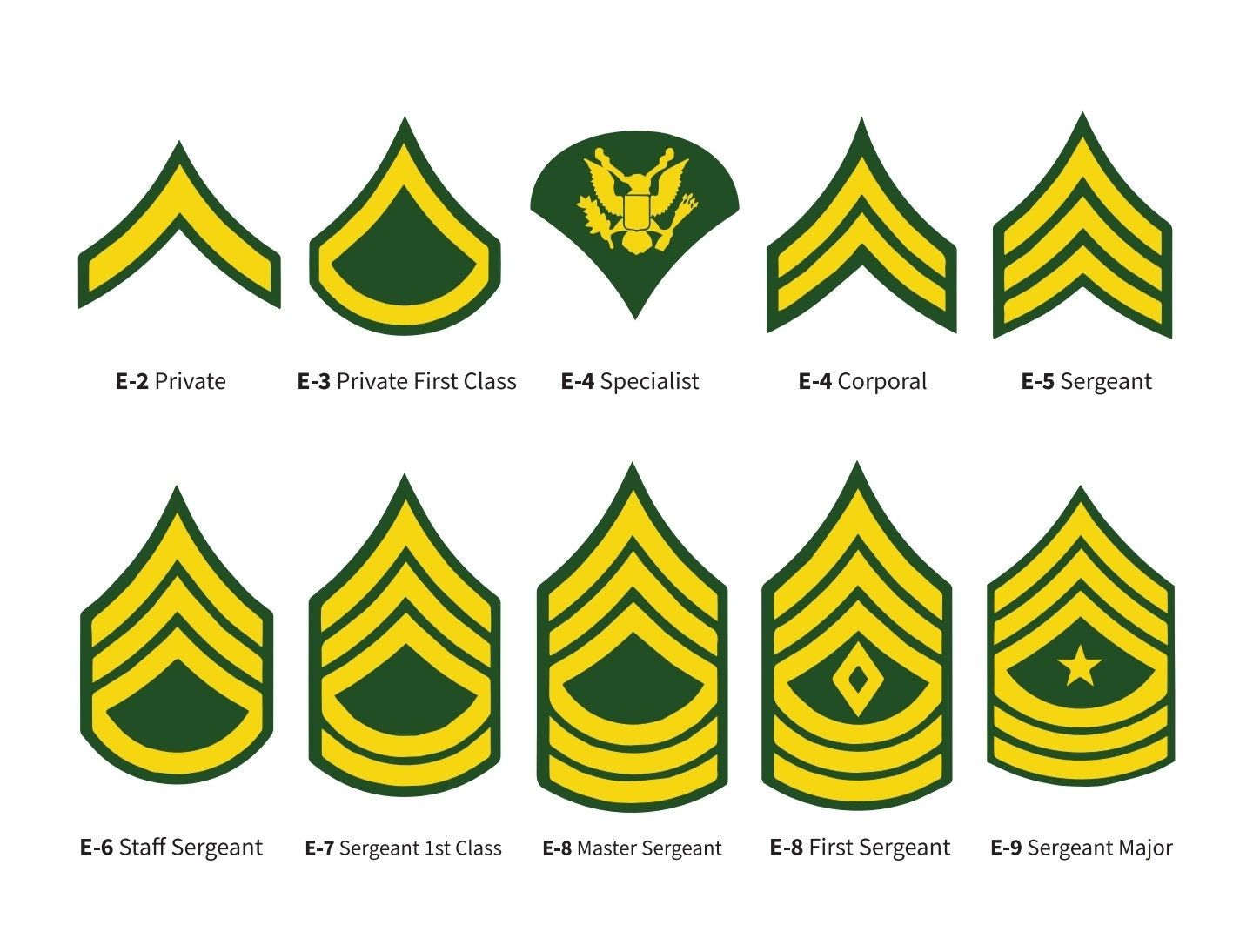Military ranks play a vital role in the structured hierarchy of armed forces around the world. For those who haven't served in the military, these ranks can often appear confusing and unfamiliar. In this article, we'll provide a comprehensive yet approachable guide to military ranks, shedding light on their significance, organization, and how they contribute to the functionality of military units. Whether you're a civilian, a curious enthusiast, or a friend or family member of a serviceperson, this guide aims to demystify the world of military ranks.Military ranks play a vital role in the structured hierarchy of armed forces around the world. For those who haven't served in the military, these ranks can often appear confusing and unfamiliar. In this article, we'll provide a comprehensive yet approachable guide to military ranks, shedding light on their significance, organization, and how they contribute to the functionality of military units. Whether you're a civilian, a curious enthusiast, or a friend or family member of a serviceperson, this guide aims to demystify the world of military ranksMilitary ranks play a vital role in the structured hierarchy of armed forces around.
Understanding the Basics
At its core, the military rank structure is a system of hierarchical designations that reflect an individual's level of authority, responsibility, and expertise. The structure ensures effective communication, coordination, and decision-making within military units, whether they're small squads or large divisions.
Key Components of Military Ranks
Enlisted Ranks: Enlisted personnel form the backbone of any military organization. These individuals carry out essential tasks, from combat roles to administrative duties. Enlisted ranks often include titles like Private, Corporal, Sergeant, and Master Sergeant, among others. Each rank represents increasing levels of experience, training, and responsibility.
Officer Ranks: Officers are leaders responsible for strategic planning, decision-making, and overall unit management. Common officer ranks include Second Lieutenant, Captain, Major, and Colonel. Officers often possess specialized skills and expertise in various fields, contributing to the diverse functions of the military.
Warrant Officer Ranks: Warrant officers are experts in their respective fields, bridging the gap between enlisted personnel and officers. These ranks, such as Chief Warrant Officer, recognize individuals who have demonstrated exceptional technical proficiency and leadership abilities.
Hierarchy and Insignia
To visually represent their rank, military personnel wear insignia—symbols on their uniforms that denote their position within the hierarchy. Insignia can include epaulets, pins, patches, and stripes, each carrying distinct shapes, colors, and arrangements depending on the rank. This visual representation aids in quick identification and promotes a sense of unity within the military community. military personnel wear insignia—symbols on their uniforms that denote their position within the hierarchy. Insignia can include epaulets, pins.
Promotions and Advancements
Advancement through military ranks is achieved through a combination of factors, including experience, demonstrated skills, and successful completion of training programs. Promotions often come with increased responsibilities and opportunities for leadership. Achieving higher ranks requires dedication, commitment, and a continuous pursuit of excellence. military ranks is achieved through a combination of factors, including experience, demonstrated skills, and successful completion of training programs. Promotions often come with increased responsibilities and opportunities for leadership. Achie
.jpg)
Roles and Responsibilities
Each military rank comes with specific roles and responsibilities that contribute to the overall mission of the armed forces. Enlisted personnel may find themselves on the front lines, executing critical tasks to ensure the success of missions. Officers, on the other hand, focus on strategic planning, decision-making, and guiding their units toward mission accomplishment. Warrant officers provide technical expertise and leadership, serving as a vital link between the enlisted and officer ranks. military rank comes with specific roles and responsibilities that contribute to the overall mission of the armed forces. Enlisted personnel may find themselves on the front lines, executing critical tasks to ensure the success of missions. Officers, on the other hand, focus on strategic planning, decision-making, and guiding their units toward mission accomplishment. Warrant officers provide technical expertise and leadership.
Conclusion
Military ranks are more than just titles; they represent a carefully structured system that enables effective communication, organization, and leadership within armed forces. This guide has aimed to provide a gentle introduction to the world of military ranks, offering insights into their significance and roles within the military community. Whether you're a civilian looking to understand military culture or a potential serviceperson seeking insights into the rank progression, this overview serves as a starting point for grasping the fundamentals of this intricate system.Military ranks are more than just titles; they represent a carefully structured system that enables effective communication, organization, and leadership within armed forces. This guide has aimed to provide a gentle introduction to the world of military ranks, offering insights into their significance and roles within the military community. Whether you're a civilian looking to understand military culture or a potential serviceperson seeking insights into the rank progression, this overview serves as a starting point for grasping.